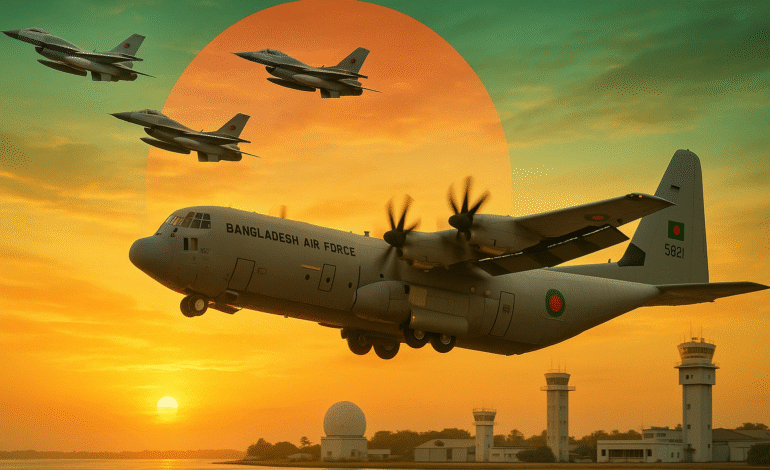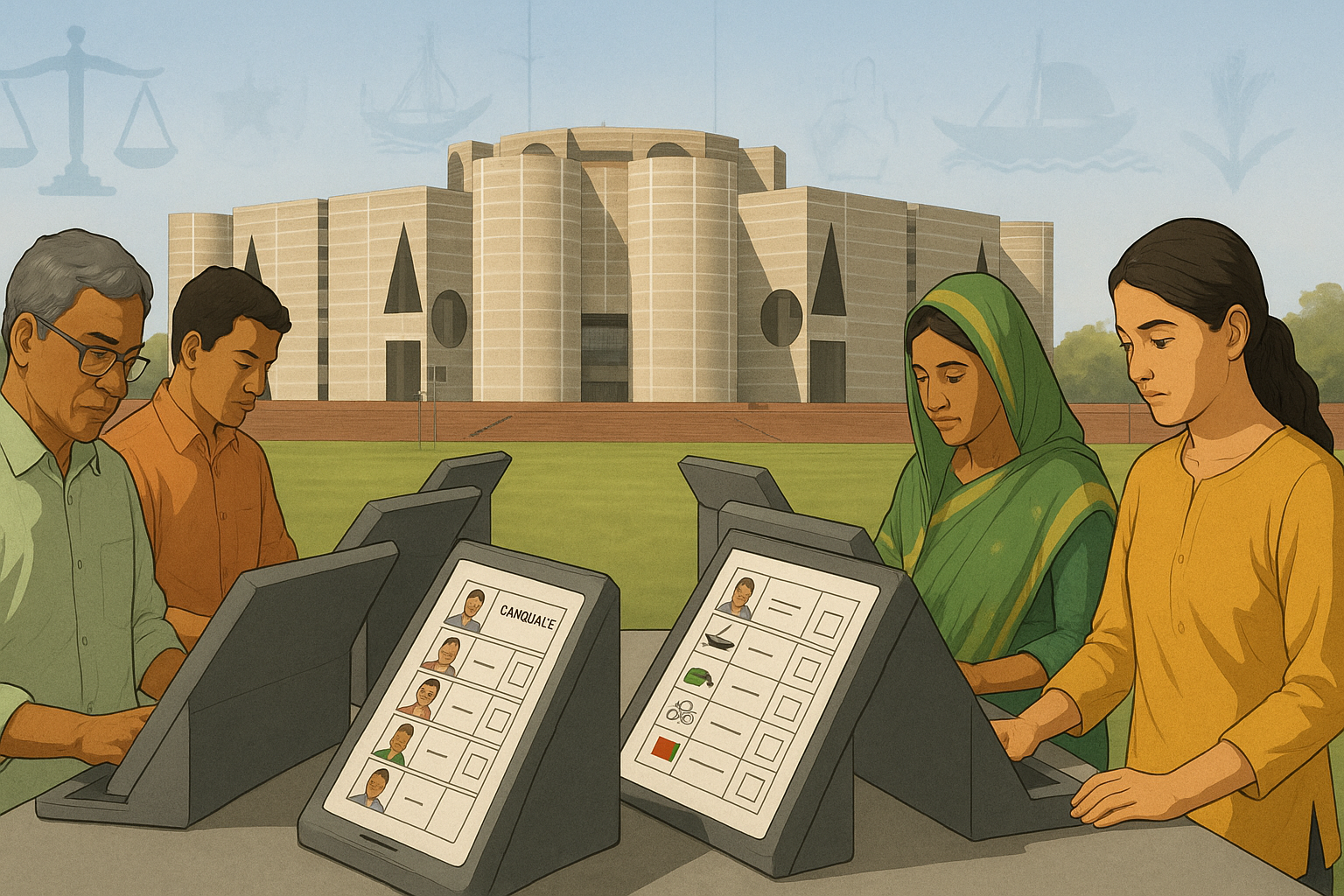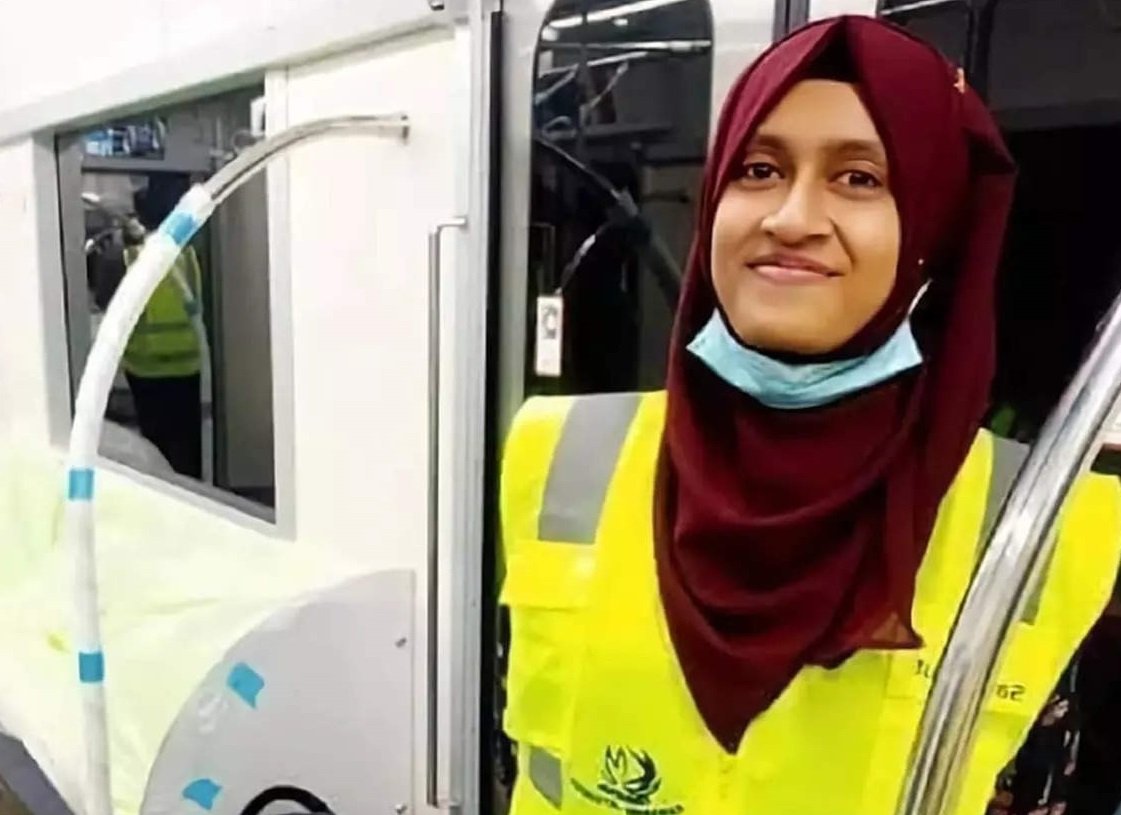Wings of Strength: Bangladesh Air Force Today and Its Future

The State of Bangladesh Air Force Capability
The Bangladesh Air Force capability reflects where the service stands in 2025, an air arm with a mix of older fighters, newer trainers and transports, and ambitious plans under the modernization blueprint Forces Goal 2030.
According to open sources, BAF maintains around 188 active aircraft in its inventory. (WDMMA)
It also has a manpower base of about 17,000 active personnel plus about 2,000 civilians. (Wikipedia)
This capability allows Bangladesh to conduct domestic air defense, humanitarian missions, search and rescue, and support for maritime operations. But to become a more regionally respected air arm, it must fill gaps in technology, fleet depth, and command structure.
In this article, I’ll examine what the BAF has now, where it falls behind in global context, and what realistic upgrades would make it “richer” in capability.
What Bangladesh Air Force Has Now
Aircraft Inventory and Roles
BAF’s inventory of 188 aircraft spans multiple roles: fighters, trainers, transports, helicopters, and light support types. (WDMMA)
- Fighters & Trainers: The backbone remains Chinese F-7 variants (including upgraded F-7BGI) used for air defense and training.
- Trainer Aircraft: Bangladesh is developing its Bangabandhu Basic Trainer (BBT-2), a local project in collaboration with BAC and Aermacchi. The BBT-2 had its maiden flight in March 2024. (Wikipedia)
- Transports: A major capability comes from the C-130J Super Hercules fleet, allowing strategic airlift and humanitarian response.
- Helicopters & Utility: The Air Force runs SAR and utility helicopters, plus light aircraft for liaison and support.
- Bases & Structure: Under Forces Goal 2030, BAF is expanding to Northern and Southern commands, building new air bases at Barishal and Sylhet, and setting up specialized centers like MASOC (Maritime Air Support Operations Center). (Wikipedia)
Recent Incidents & Challenges
In July 2025, a Bangladesh Air Force F-7BGI training jet crashed into a Dhaka school campus shortly after takeoff from Kurmitola, killing at least 27 people and injuring many. (Reuters)
That tragic event highlighted the risks of operating older jets and the need for safer routes, modern maintenance, and stricter safety protocols.
Earlier in 2025, there was also an attack on the BAF base in Cox’s Bazar, leaving one civilian dead and others injured, pointing to local security vulnerabilities. (Wikipedia)
These incidents underscore that capability is not just about numbers, but reliability, safety, and infrastructure.
How It Compares Regionally
To understand how “rich” an air force is, we should compare BAF with comparable or aspirational peers.
- Myanmar: Operates more advanced fighters like Su-30 and JF-17, giving it superior air combat capability.
- Sri Lanka and Nepal: These air forces are much more modest, focused on utility, patrol, and limited defense. Bangladesh already surpasses them in transport, SAR, and multi-use aircraft.
- Pakistan: A stronger benchmark. Their F-16 fleet, aerial refueling, and AEW & C assets place them well above. BAF doesn’t yet have that depth.
In terms of Global Firepower Index, Bangladesh ranks 35 out of 145 among nations evaluated, combining its land, naval, and air strength. (Global Firepower)
So BAF is mid-level among smaller nations, strong in some domains, weak in others.
What “Rich” Capability Means in Air Force Terms
To be considered richly capable, an air force needs balance, depth, modernization, and sustainability across roles. For BAF, here are key pillars:
1. Modern Multirole Fighters in Adequate Numbers
A handful of modern fighters with AESA radar, beyond-visual-range missiles, and data links is essential to ensure air superiority. Bangladesh is reportedly planning to acquire 20 J-10CE jets by 2027 under a deal worth around $2.2 billion. (Wikipedia)
This acquisition, if completed, would significantly upgrade frontline capability.
2. Airborne Early Warning & Control (AEW & C)
To extend radar coverage, coordinate air defense, and integrate with other services, at least one AEW aircraft or equivalent high-end radar system is needed.
3. Aerial Refueling & Tankers
Refueling capabilities extend reach, endurance, and flexibility of fighter and support fleets. Even a modest tanker detachment would greatly enhance operations over the Bay of Bengal.
4. Layered Ground Air Defense
Alongside fighters, a well layered ground-based air defense (short, medium, and long range) ensures that even if jets are engaged elsewhere, key assets and cities are defended.
5. Persistent Surveillance & ISR
Maritime Patrol Aircraft, MALE UAVs, and sensor networks are critical for Bangladesh’s vast sea boundary. They reduce the burden on fighters and provide early warning.
6. Uncrewed Systems & Autonomy
A capable UAV fleet for reconnaissance, counter-insurgency, base defense, and support tasks is a force multiplier.
7. Training, Maintenance & Sustainment
Having modern aircraft is only effective if pilot training, simulators, schools, and MRO (maintenance, repair, overhaul) infrastructure match up. High readiness rates are more important than pure count.
8. Command, Control & Network Integration
A capable C4ISR backbone is necessary to coordinate land, naval, and air assets as a joint force. Integration with other services multiplies the effectiveness of every platform.
9. Domestic Industry & Growth
Projects like the BBT-2 trainer aircraft show that local capability and industry can grow. Encouraging indigenous development reduces dependence and cost. (Wikipedia)
A truly “rich” air force is not just imported platforms but a self-sustaining defense ecosystem.
Roadmap: How BAF Can Become Richer
- Accelerate the J-10CE acquisition and commit to training, weapons, and sustainment.
- Acquire or co-develop AEW & C platforms, possibly in partnership with friendly nations.
- Introduce tanker aircraft, even of modest size, as enablers.
- Strengthen air defense with layered systems and radar modernization.
- Expand UAV and ISR fleets for maritime and coastal coverage.
- Build pilot training capacity, simulator infrastructure, and schools under Forces Goal 2030.
- Increase budget allocation for maintenance, logistics, spare parts, and lifecycle support.
- Invest in domestic aerospace projects like BAC/BTT to grow local manufacturing skills.
- Improve safety culture, protocols, and rigorous maintenance to reduce accidents.
BAF is already following many of these paths under its modernization plans. (Wikipedia)
From Capable to Remarkable
The Bangladesh Air Force capability today is respectable. The mix of airlift strength, training modernization, and strategic vision gives it a foundation many neighbors lack. But to become truly “rich” in air power, it must fill gaps in multirole fighters, AEW, tankers, ISR, and sustainment.
If done wisely, BAF can transform from a mid-tier regional air arm to a force able to defend airspace, project power, support maritime security, and respond in crises—earning both respect and deterrence.
That is the vision Bangladesh must aim for in its air ambitions.







